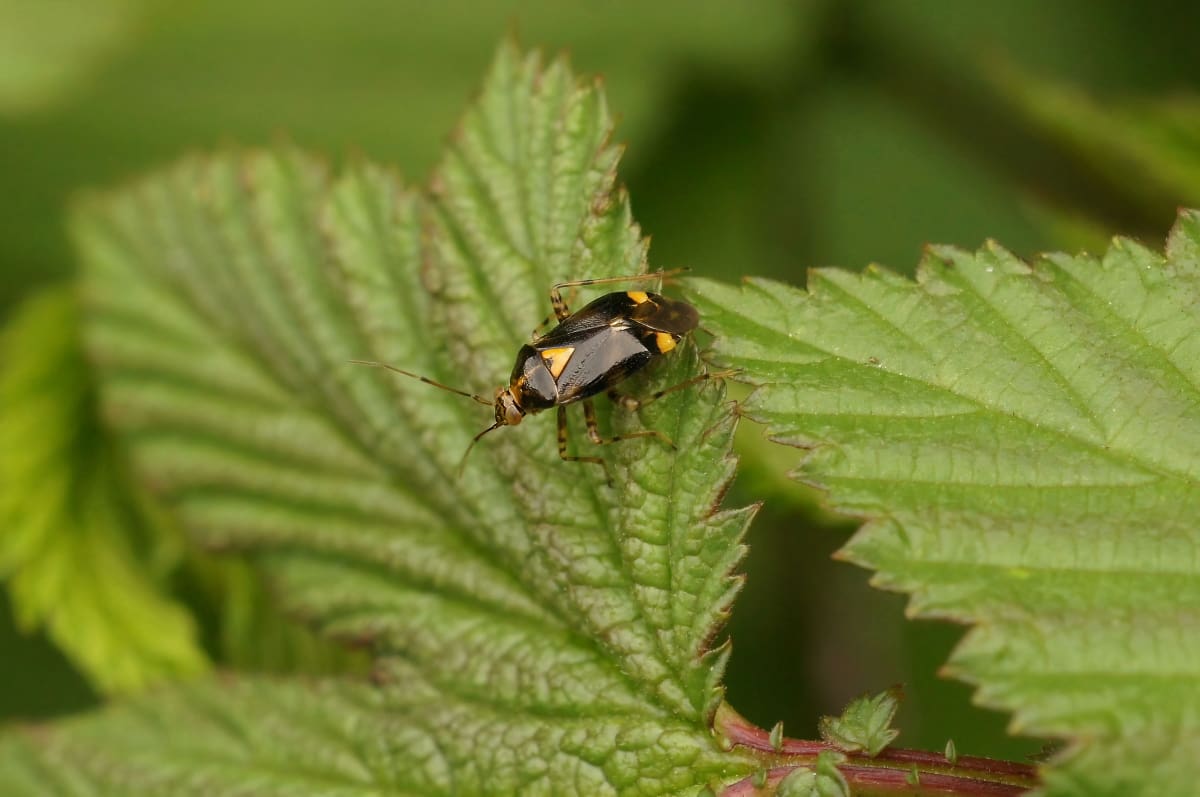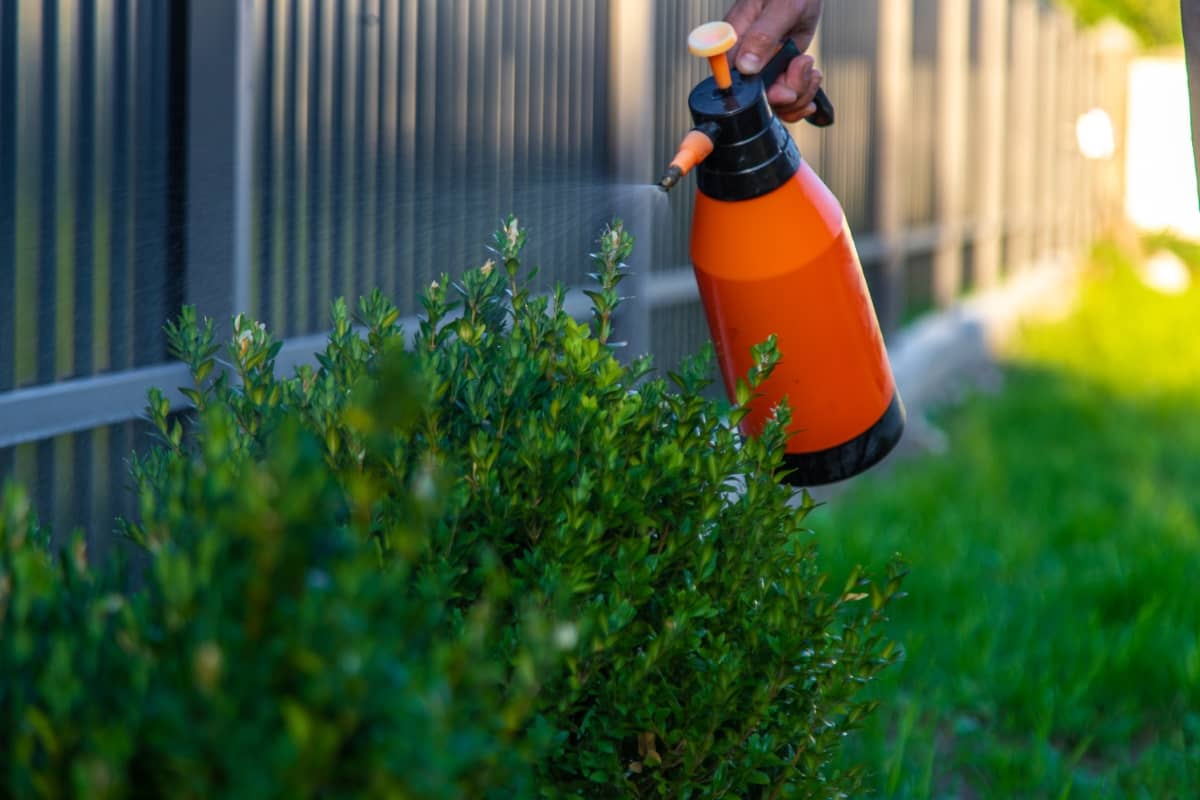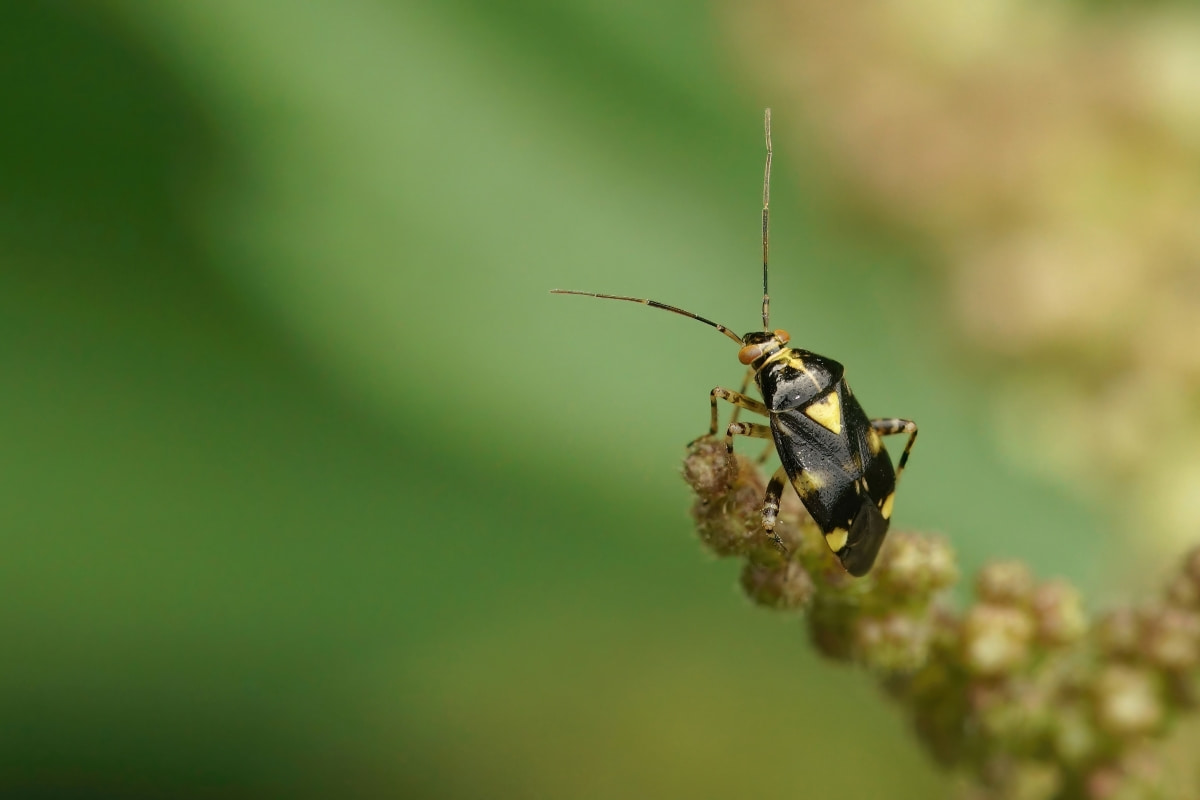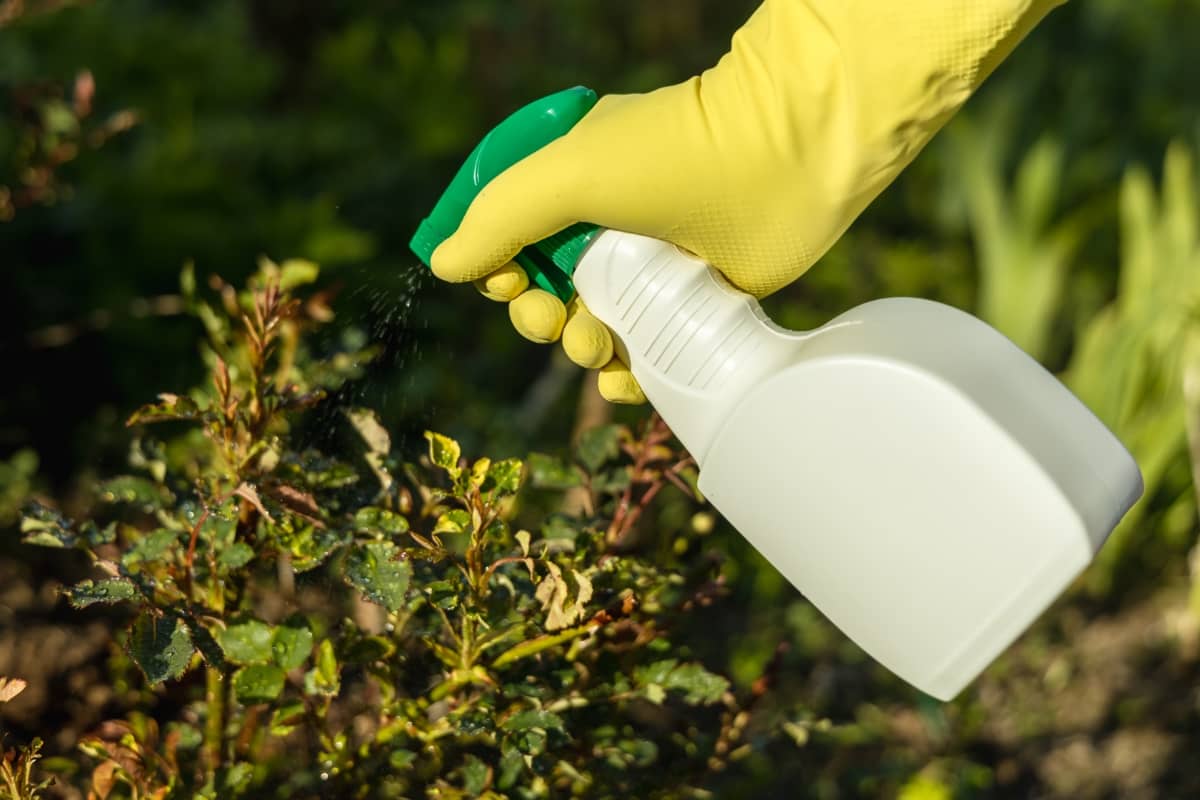Capsid bugs, belonging to the family Miridae, undergo incomplete metamorphosis, consisting of egg, nymph, and adult stages. Eggs are typically laid on host plants, where nymphs emerge and undergo several instars before reaching adulthood. Adult capsid bugs are small, ranging from 3 to 5 mm in length, with elongated bodies and piercing-sucking mouthparts. They often exhibit green or brown coloration, blending well with plant foliage.
Recognizing Signs of Capsid Bug Damage
Capsid bugs inflict damage by piercing plant tissues and feeding on sap. Capsid Bug infestation signs include distorted growth, stippling on leaves, wilting, and necrotic lesions. Additionally, the presence of nymphs and adults on plants indicates infestation. Vigilance is crucial for early detection and management to mitigate damage effectively.

Management of Capsid Bug in Gardens
Initial Response to Infestation
Immediate Actions to Take Upon Detection
- Manual Removal: Handpick capsid bugs from plants and drop them into a container of soapy water to eliminate them.
- Cultural Practices: Enhance plant health through proper watering and fertilization to increase their resistance to infestation.
- Apply Neem Oil: Spray affected plants with neem oil as a DIY Capsid Bug elimination to deter and kill capsid bugs without harming beneficial insects.
Assessing the Extent of Capsid Bug Presence
- Visual Inspection: For Capsid Bug damage management, first conduct thorough visual inspections of both upper and lower leaf surfaces, stems, and buds to determine the density of capsid bug populations.
- Sticky Traps: Place sticky traps near affected plants to monitor adult capsid bug activity and capture them for population assessment.
- Shake Test: Perform a shake test by vigorously shaking plant foliage over a white sheet to dislodge and count capsid bugs present.
Chemical Control Measures
Selecting Effective Insecticides for Capsid Bugs
- Pyrethroids: As one of the chemical treatments for Capsid Bugs, it is effective against capsid bugs. Pyrethroids such as cypermethrin and bifenthrin disrupt their nervous system, leading to paralysis and death.
- Neonicotinoids: Insecticides like imidacloprid and acetamiprid target capsid bugs’ nervous system, causing paralysis and eventual mortality.
- Spinosad: Derived from naturally occurring bacteria, spinosad effectively controls capsid bugs by causing paralysis and death through ingestion or contact.
Safe Application Practices for Garden Use
- Read and adhere to the insecticide label instructions regarding dosage, application frequency, and safety precautions.
- Wear protective equipment, such as hand gloves, goggles, and long sleeves, when handling and applying insecticides.
- Choose calm, wind-free days for insecticide application to prevent drift and ensure targeted coverage.
- Direct sprays toward the target plants and avoid spraying during windy conditions to minimize off-target effects.
Organic and Natural Control Methods
Neem Oil: An Eco-Friendly Solution
Neem oil is extracted from the neem tree’s seeds and is one of the safe insecticides for Capsid Bugs. It contains compounds like azadirachtin, which disrupt the feeding, growth, and reproduction of insects. To use this oil as one of the organic Capsid Bug solutions, dilute it according to the manufacturer’s instructions and spray it onto affected plants.
The oil coats the insects, suffocating them and interfering with their life cycle. Additionally, neem oil has antifeedant properties, deterring capsid bugs from feeding on treated plants.
Introducing Beneficial Predators to Your Garden:
Birds: Birds, such as robins, wrens, and sparrows, feed on insects, including capsid bugs, helping to reduce their populations. Installing bird feeders and birdhouses and providing water sources can attract these beneficial avian predators to your garden.
Ground Beetles: Ground beetles are voracious predators of various garden pests, including capsid bugs. These natural remedies for Capsid Bugs prey on eggs, larvae, and adult insects, helping to keep pest populations in check. To attract ground beetles, maintain mulch layers, provide habitat structures like rocks and logs, and avoid excessive use of pesticides that may harm these beneficial insects.
In case you missed it: Top 10 Homemade Sprays for Container Garden: DIY Solutions for Getting Rid of Bugs

Cultural Control Techniques
Plant Selection: Growing Resistant Varieties
Selecting plant varieties that are naturally resistant or tolerant to capsid bugs can significantly Capsid Bug repellents and minimize damage in your garden. Research and choose cultivars known for their resistance to capsid bugs, as well as other common garden pests. Resistant varieties often possess traits such as thicker foliage, tougher stems, or the production of natural repellents that deter insect feeding.
Proper Garden Maintenance to Deter Capsid Bugs
Garden maintenance to prevent Capsid Bugs, such as regularly removing weeds, fallen leaves, and debris, as these can serve as hiding spots and breeding grounds as eco-friendly Capsid Bug control. Prune to improve air circulation and reduce dense foliage where capsid bugs may congregate.
Additionally, avoid over-fertilization with nitrogen-rich fertilizers, as this can stimulate lush growth, attracting capsid bugs. Implementing proper irrigation practices, such as watering at the base of plants in the morning, can also discourage capsid bug infestations by minimizing excess moisture on foliage.
Physical and Mechanical Barriers
Using Floating Row Covers for Protection
Floating row covers are lightweight, permeable fabrics that provide an effective physical barrier against capsid bugs and other pests. By covering susceptible plants with row covers, you create a barrier that prevents adult capsid bugs from accessing the plants to lay eggs and nymphs from feeding on foliage. These covers allow sunlight, air, and moisture to penetrate while keeping pests at bay. Ensure the covers are securely anchored to the ground to prevent gaps that insects could exploit.
The Role of Sticky Traps in Capsid Bug Management
As Capsid bug prevention techniques, These traps consist of bright yellow or blue cards coated with a sticky substance that captures adult capsid bugs. By placing sticky traps strategically throughout the garden, you can monitor the presence and activity of capsid bugs, helping to assess the severity of infestations and inform control strategies. Additionally, sticky traps can help reduce capsid bug populations by trapping and removing adults before they have a chance to lay eggs and perpetuate the infestation.
Biological Control Strategies
Exploiting Natural Enemies of Capsid Bugs
Harnessing natural enemies like nabid bugs and spiders can effectively control capsid bugs in agricultural settings. These beneficial insects prey on capsid bugs, reducing their populations without the need for chemical pesticides. Implementing strategies to attract and sustain these natural enemies, such as providing habitat and avoiding broad-spectrum pesticides, promotes ecological balance and sustainable pest management practices.
The Use of Bacillus thuringiensis (Bt) and Other Biological Agents
Bt is a soil bacterium that is an effective Capsid bug treatment. When ingested by capsid bugs, Bt toxins disrupt their digestive systems, leading to paralysis and death. Bt-based insecticides target specific pests while posing minimal risk to non-target organisms, making them a valuable tool in integrated pest management strategies. Additionally, other biological agents, such as entomopathogenic fungi and viruses, offer effective control of capsid bugs by infecting and killing them.
In case you missed it: Top 10 Homemade Garden Lawn Sprays: Easy DIY Solutions for Getting Rid of Bugs

Advanced Integrated Pest Management (IPM)
Combining Strategies for a Holistic Approach
Integrated pest management for Capsid Bugs involves combining multiple strategies to manage pests effectively while minimizing environmental impact. A holistic approach to IPM integrates cultural, biological, physical, mechanical, and chemical control methods to create a comprehensive pest management plan.
By combining strategies, gardeners can target capsid bugs at different stages of their life cycle and reduce reliance on any single control method. For example, planting resistant varieties, implementing proper garden maintenance practices, introducing natural enemies, and using physical barriers like row covers can all work for getting rid of Capsid Bugs.
In case you missed it: Top 10 Homemade Garden Caterpillar Sprays: Easy DIY Solutions for Getting Rid of Caterpillars

Conclusion
Managing capsid bugs in gardens requires a multifaceted approach that integrates various control strategies. By combining cultural, biological, physical, mechanical, and chemical methods, gardeners can effectively mitigate infestations while minimizing environmental impact. Implementing these Capsid bug control methods collectively ensures pest management, fostering healthier gardens and thriving ecosystems.
- Deworming Schedule for Dogs/Puppies: A Beginners Guide
- How to Prevent and Control Parasites in Goats
- Beneficial Insects in Pest Management
- Natural Solutions for Pest Control in Flower Gardens
- Types of Fungicides Used in Agriculture
- Common Issues in the Fruit Development Stage of Pomegranate Farming
- Fruit Development Issues in Papaya: Easy Solutions and Treatment
- Soil-Borne Diseases and How to Protect Your Plants
- Practices to Prevent Disease Spread in the Garden